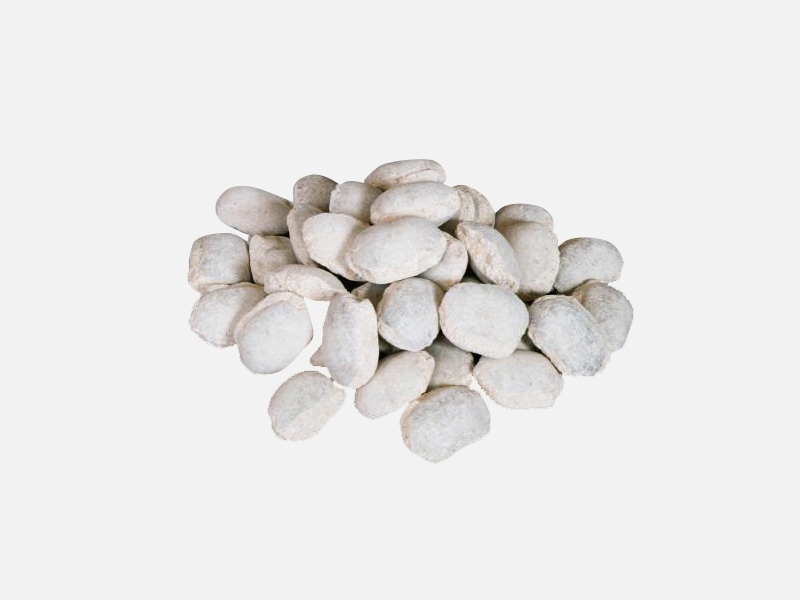7 effective methods to improve thermal shock resistance of refractory materials
Posted time:2021-11-18 Page view:24904Thermal shock resistance refers to the ability of refractories to resist damage caused by rapid changes in temperature. It has been called thermal shock stability, thermal shock resistance, temperature resistance, cold resistance and heat resistance. Amorphous refractory
The determination of thermal shock resistance according to different requirements and product types should be determined in accordance with the corresponding test methods, the main test methods are: Ferrous metallurgy standard YB/T 376.1 -- 1995 Refractory products thermal shock test method (water quench cooling method), ferrous metallurgy standard YB/T 376.2 -- 1995 Refractory products thermal shock test method (air quench cooling method), ferrous metallurgy standard YB/T 376. 3-2004 Test methods for thermal shock resistance of refractory products - Part 3: Water quenching-crack determination method, ferrous metallurgy standard YB/T 2206.1-1998 Refractory castables thermal shock test method (compressed air flow quench method), ferrous metallurgy standard YB/T 2206.2 -- 1998 refractory castables thermal shock test method (water quench method).
The mechanical properties and thermal properties of materials, such as strength, fracture energy, elastic modulus, coefficient of linear expansion and thermal conductivity, are the main factors that affect their thermal shock resistance. Generally speaking, the smaller the coefficient of linear expansion of the refractory, the better the thermal shock resistance; The higher the thermal conductivity (or thermal diffusion coefficient) of the material, the better the thermal shock resistance. In addition, the particle composition, density, porosity micro-refinement, porosity distribution, product shape, etc. of the refractory have an effect on its thermal shock resistance. The existence of a certain number of microcracks and pores in the material is beneficial to its thermal shock resistance. The large size and complex structure of the product will lead to serious internal temperature distribution and stress concentration, reducing thermal shock resistance.
Studies have shown that the thermal shock stability of refractory can be improved by preventing crack propagation, consuming crack propagation power, increasing fracture surface energy, reducing linear expansion coefficient and increasing plasticity. Specific technical measures are:
(1) Proper porosity
In addition to the existence of pores, there is also a certain amount of cracks between the bone particles and the binding phase inside the refractory. In the process of fracture of refractory, the internal pores and cracks can play a certain role in preventing and inhibiting the fracture propagation crack. For example, as a refractory used under high temperature thermal shock conditions, in the service process, surface cracks will not cause catastrophic fracture of the material, and the cause of damage is mostly the structural spalling caused by internal thermal stress. When the porosity inside the material is large, the length of cracks caused by thermal stress will be shortened, and the number of cracks will be increased. The short and many cracks cross each other to form a network structure, which increases the fracture energy required when the material is fractured, and can effectively improve the thermal shock stability of the material. It is generally believed that when the porosity of refractory is controlled at 13%-20%, it has better thermal shock stability.
(2) Control the particle grading, critical particle size and shape of raw materials
The results show that the surface energy caused by material fracture is positively proportional to the square of particle size in the system. Therefore, the thermal shock stability of refractory can be improved by introducing large particle aggregate into the material system to make the crack turn near the large aggregate and improve the performance of intergranular crack. Generally speaking, the elastic modulus of the aggregate in the refractory is significantly greater than that of the matrix, and this difference in the elastic modulus makes the large particle aggregate able to delay the expansion of the original crack of the material. The greater the difference of the above elastic modulus, the more obvious the effect of aggregate on delaying crack propagation. At the same time, the shape of aggregate is also an important factor affecting the thermal shock stability of refractory materials. For example, adding an appropriate amount of rod or flake aggregate to the material system can improve the thermal shock stability of refractory products.
